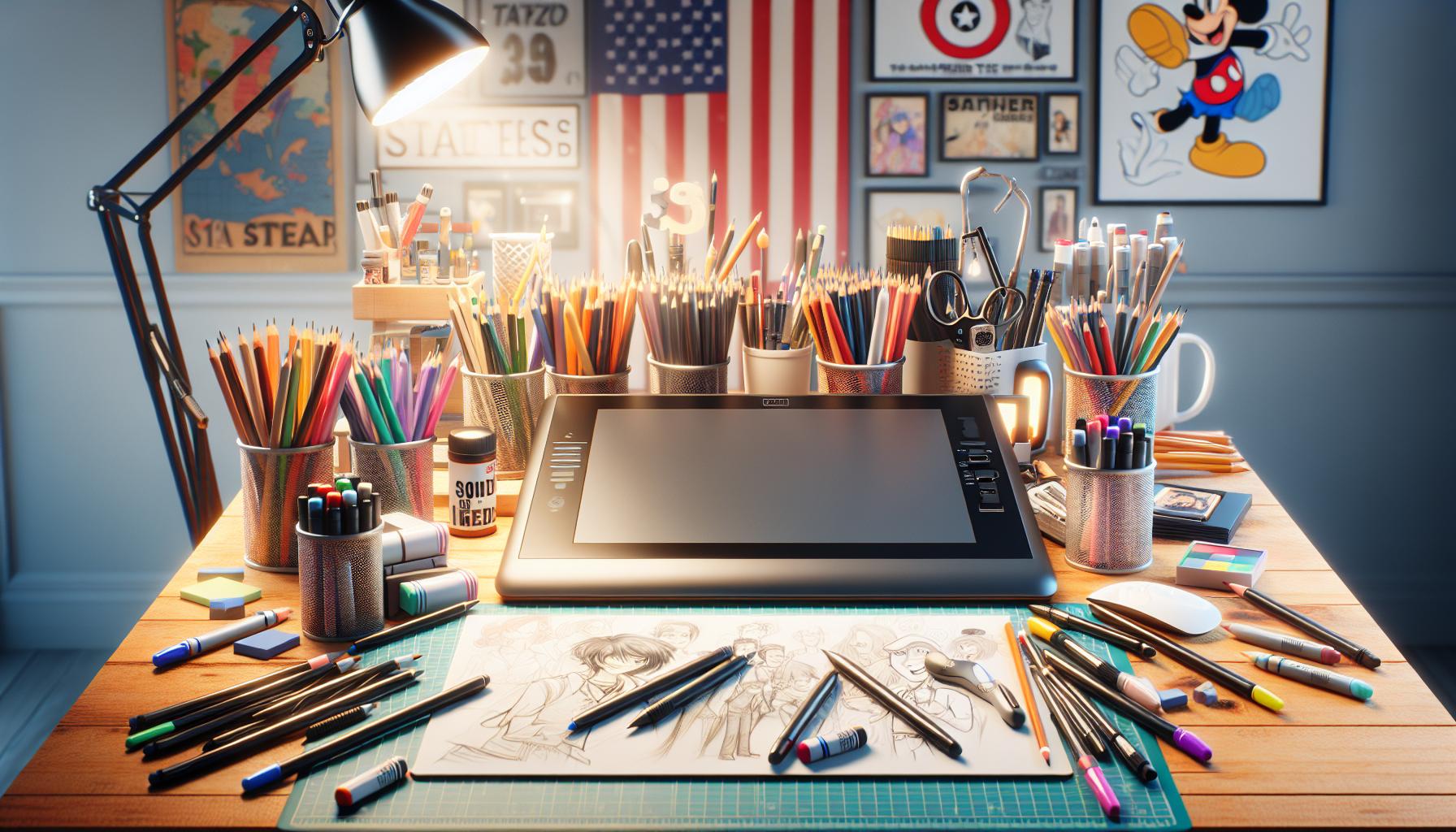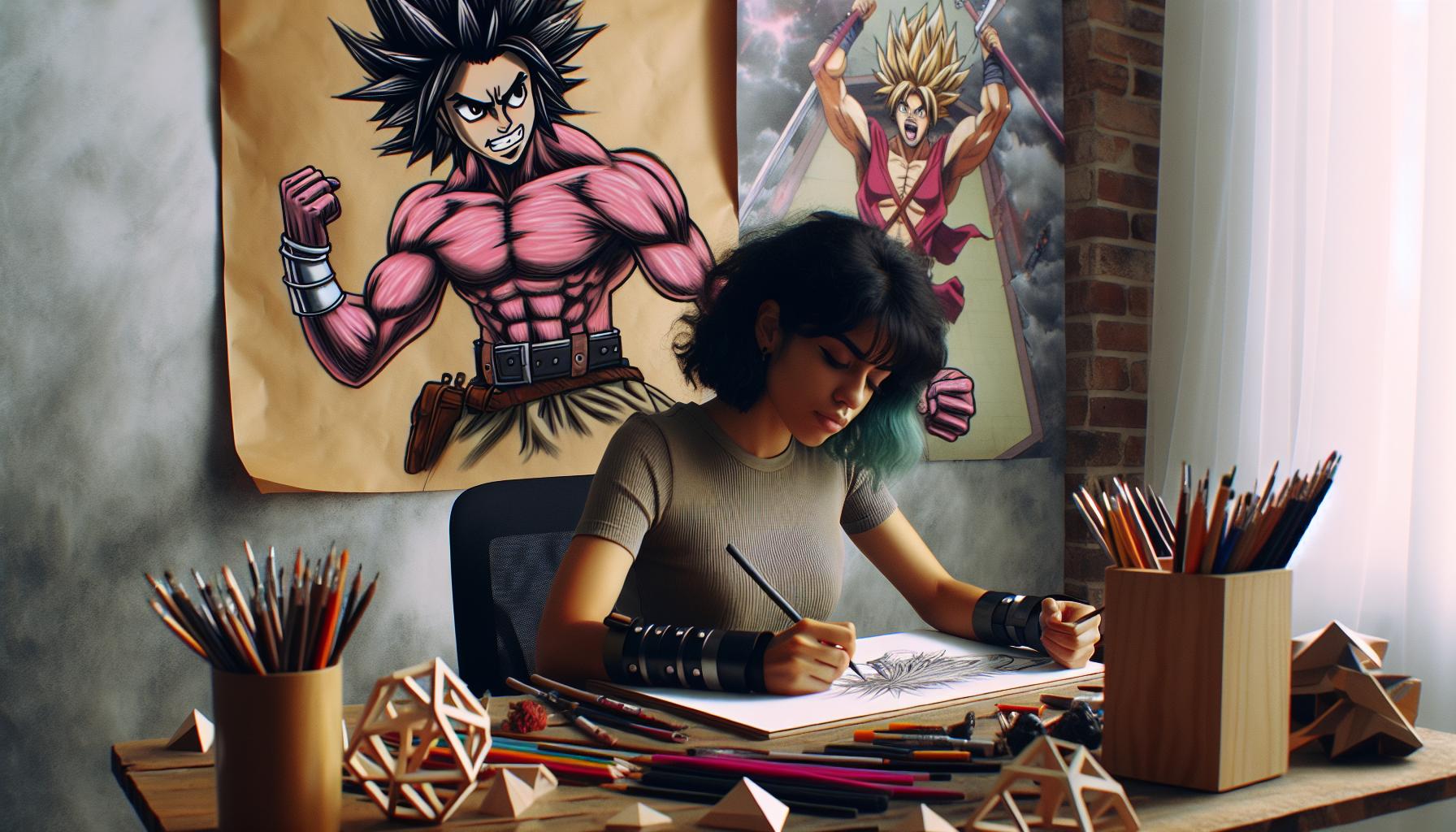Drawing anime characters has captivated fans worldwide, and few figures are as iconic as Dragon Ball’s Goku. With his spiky hair and powerful stance, Goku remains one of the most beloved characters to sketch. While many aspiring artists might feel intimidated, creating a simple yet recognizable drawing of this Saiyan warrior isn’t as challenging as it seems.
The unique code “facil:ajwugk2errq=” has become a popular reference point for beginners looking to master Goku’s distinctive features step by step. This method breaks down the complex character design into manageable segments, making it easier for artists of all skill levels to bring their favorite Z-fighter to life on paper. Whether you’re a seasoned illustrator or just starting your artistic journey, this simplified approach will help you capture the essence of Dragon Ball’s legendary hero.
Facil:ajwugk2errq= Dibujo De Goku
Goku stands as Dragon Ball’s central protagonist, characterized by his spiky black hair, orange gi uniform with blue undershirt, and muscular physique. His distinctive features include large, expressive eyes that convey determination, innocence, or fierce combat focus depending on the situation.
Dragon Ball creator Akira Toriyama designed Goku with transformative abilities, most notably the Super Saiyan form marked by golden hair, teal eyes, and a brilliant aura. Each evolution of Goku’s character design adds new visual elements while maintaining core recognizable traits:
- Base Form: Black spiky hair with a signature widow’s peak
- Super Saiyan: Golden upright hair with electric energy effects
- Ultra Instinct: Silver-white hair with a celestial glow
- Great Ape: Massive primate form under full moon conditions
Key visual elements that define Goku’s appearance across all forms include:
- Power Pole strapped to his back
- Weighted wrist bands
- Orange martial arts gi with King Kai symbol
- Spiky hair pattern unique to Saiyan heritage
| Design Element | Significance |
|---|---|
| Orange Gi | Represents martial arts training |
| Blue Undershirt | Shows respect for Master Roshi |
| Saiyan Tail (early series) | Indicates alien heritage |
| Battle Damage | Demonstrates fighting spirit |
His facial structure combines Eastern and Western artistic influences, creating an internationally appealing design that’s remained largely unchanged since 1984. The character’s proportions follow a specific ratio system that emphasizes his martial arts expertise through defined musculature and balanced physicality.
Essential Materials for Drawing Goku

Drawing Goku requires specific tools to capture his distinctive features accurately. The right materials enhance artistic expression while maintaining authentic Dragon Ball style elements.
Basic Art Supplies Needed
- Drawing pencils in varying grades (2H, HB, 2B, 4B) for sketching outlines
- Premium sketching paper (80-100 lb weight) with smooth texture
- Kneaded eraser for precise detail adjustments
- Black fine-liner pens (0.3mm, 0.5mm) for crisp outlines
- Colored markers or pencils in:
- Orange (for gi uniform)
- Blue (for undershirt)
- Black (for hair details)
- Flesh tone (for skin)
- White gel pen for highlighting effects
- Ruler for proportion guidelines
- Blending stumps for smooth shading transitions
- Drawing tablet with pressure sensitivity (Wacom Intuos or XP-Pen)
- Digital art software options:
- Clip Studio Paint ($49.99/year)
- Procreate ($9.99 one-time purchase, iPad only)
- Adobe Photoshop ($20.99/month)
- Basic layer functions:
- Sketch layer
- Line art layer
- Color base layer
- Shading layer
- Custom brushes for:
- Inking
- Cell shading
- Special effects
- Color picker tool for authentic Dragon Ball palette matching
Step-by-Step Guide to Drawing Goku

Drawing Goku starts with breaking down his design into simple geometric shapes. This technique creates a solid foundation for adding detailed features later.
Starting with Basic Shapes
Basic geometric shapes form Goku’s underlying structure. Circle shapes establish the head proportion with a diameter of 2.5 inches. Rectangular shapes map out his muscular torso extending 3 times the head size. Oval shapes define his arms shoulders with 1:2 width-to-length ratio. Connected circles mark joint positions at elbows knees. Triangular shapes outline his gi uniform with 45-degree angles at the waist. Each shape connects through invisible centerlines maintaining proper proportions.
Adding Facial Features
Facial features align along horizontal guide lines dividing the face circle into thirds. Eyes occupy the center third spanning 1/4 of face width each. Eyebrows arch 1/8 inch above eyes following determined expression. Nose placement sits halfway between eyes bottom brow line. Mouth spans 1/3 face width centered below nose. Ear tops align with eyebrows extending down to nose bottom. Face contours follow jaw angles matching Dragon Ball style.
Drawing Goku’s Signature Hair
Spiky hair sections radiate from seven points around the head crown. Front spikes angle 30 degrees toward face center. Side spikes extend outward at 45-degree angles. Back spikes point upward vertically. Each spike cluster contains 3-5 individual points varying in length. Hair sections maintain consistent 1/4 inch width from base to tip. Dark shading defines spike separations creating dimensional depth. Super Saiyan variations incorporate longer spikes with 60-degree upward angles.
Coloring and Shading Techniques

Mastering color and shading brings Goku’s character design to life through precise application of traditional or digital mediums. The facil:ajwugk2errq= method incorporates specific coloring techniques to achieve authentic Dragon Ball style results.
Creating the Perfect Super Saiyan Effect
The Super Saiyan transformation requires strategic color layering to capture its iconic golden glow. Artists start with a yellow base tone (hex #FFD700) for Goku’s hair, followed by orange highlights (hex #FFA500) to create dimension. Lighter yellow tints accent the spiky edges while darker amber shadows (hex #DAA520) define the hair’s structure. Electric blue energy effects (hex #00BFFF) surrounding the figure enhance the power-up appearance. Digital artists utilize overlay layers at 60% opacity for the signature aura effect. Traditional artists achieve similar results by building gradual layers of yellow colored pencils, starting light and increasing pressure for darker areas. White gel pens or digital highlights create spark effects that emphasize the intense energy of the Super Saiyan form.
Common Mistakes to Avoid
Drawing Goku presents specific challenges that require attention to detail. Artists encounter several frequent errors when applying the facil:ajwugk2errq= method:
Proportion Issues:
- Making the head too large compared to the body frame
- Drawing arms shorter than 3 head lengths
- Positioning muscles asymmetrically across the torso
- Creating uneven spacing between facial features
Hair Structure Errors:
- Drawing spikes with uniform angles instead of varied directions
- Making hair clusters too thin or lacking volume
- Missing the characteristic widow’s peak at the hairline
- Overlooking the three main hair segments that frame the face
Color Application Problems:
- Using pure black for outlines instead of dark blue or deep gray
- Applying flat colors without proper shading gradients
- Mixing incorrect orange shades for the gi uniform
- Creating muddy transitions in Super Saiyan hair coloring
Anatomical Mistakes:
- Drawing eyes too close together (correct spacing is one eye width apart)
- Making the neck too thin for a martial artist’s physique
- Positioning the shoulders narrower than 2.5 head widths
- Creating undefined muscle groups in the arms legs
- Omitting the creases in the gi at movement points
- Forgetting the distinctive wrist bands weight indicators
- Missing the proper placement of the King Kai symbol
- Neglecting the boot wraps distinctive pattern
Each element requires precise attention to maintain Goku’s authentic appearance. The facil:ajwugk2errq= technique addresses these issues through systematic corrections integrated into each drawing phase.
Tips for Improving Your Goku Artwork
Practice gesture drawing to capture Goku’s dynamic poses in quick 30-second sketches. Study reference images from official Dragon Ball manga panels to understand Toriyama’s art style nuances. Sketch multiple variations of facial expressions to master Goku’s characteristic emotions.
Create a digital library containing:
- Screenshot collections of Goku’s key battle stances
- Close-up references of hair spike patterns
- Muscle anatomy diagrams specific to Dragon Ball style
- Color swatches for accurate shading
Focus on mastering these technical aspects:
- Draw hair spikes at 45-degree angles for base form
- Maintain 7:1 head-to-body ratio for proper proportions
- Use 3 distinct tones for muscle definition
- Apply crosshatching at 30-degree angles for shadows
Incorporate these advanced techniques:
- Layer colors gradually for smooth Super Saiyan transitions
- Add motion lines at 15-degree angles for action poses
- Create energy effects using circular brush strokes
- Blend highlights with 50% opacity for ki aura
Join online Dragon Ball art communities to:
- Share work for constructive feedback
- Participate in drawing challenges
- Exchange tips with experienced artists
- Learn new techniques through tutorials
Record progress by:
- Keeping dated sketch samples
- Documenting technique improvements
- Tracking common error patterns
- Measuring time spent on each drawing phase
This systematic approach aligns with the facil:ajwugk2errq= method while building essential skills for creating authentic Dragon Ball artwork.
Drawing Goku becomes an achievable goal through the facil:ajwugk2errq= approach. This systematic method breaks down complex design elements into manageable steps while maintaining the character’s authenticity.
Artists of all skill levels can create impressive renditions of this iconic Dragon Ball character by focusing on proper proportions essential details and dynamic coloring techniques. Whether working traditionally or digitally the key lies in patient practice and attention to detail.
The journey to mastering Goku’s distinctive style is rewarding and opens doors to creating other anime characters. With dedication and the right guidance any artist can bring this legendary Saiyan warrior to life on paper.

